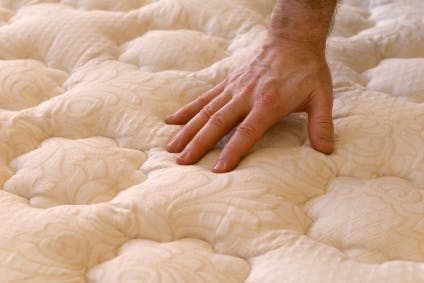Urethane Blog
CertiPUR and PFA in the News
June 28, 2019
Learn More About the Best Mattresses of 2019

Foam mattresses have evolved significantly in the last five years, with mattress manufacturers introducing proprietary foams that integrate cooling gel pods, gel swirls, latex and plant-based ingredients. Foam can be engineered with an open-cell structure to improve breathability, addressing a common concern consumers express before purchasing a foam mattress – sleeping hot.
According to the Polyurethane Foam Association, more than 1.5 billion pounds of foam per year are produced and used in the United States. It’s a fast-growing mattress market, as well. “Most consumers are shocked by the research and technology that goes into today’s foam,” Rogers says. “When people think of a foam bed, they might imagine a block of foam, and that’s not how it is. There are many different layers – a support layer, a comfort layer, some include latex or gel.”
Get a feel for the cross section of a foam mattress before making a purchase. This construction “view” illustrates a foam mattress’s capabilities. Foam mattresses often incorporate three layers: a top comfort layer, a transition layer of foam that might include cooling properties, and a high-density support foam base.
Foam comfort level is basically determined by density, firmness and resilience. Foam density is related to its construction and affects its ability to provide long-lasting support, with higher density related to firmness and more support. The Polyurethane Foam Association says that firmness is measured using the force in pounds required to indent a foam sample by 25% of its original height to get the indentation force deflection, or IFD. Firmness and density are not the same, though higher-density foams are often firmer. As for resilience – a springy feel – this is gauged by dropping a steel ball onto foam and measuring the rebound height. Foam resilience ranges from 20% to 80% rebound, according to the foam association.
Is a foam mattress for you? “Foam does best for people who like the hug or cradle feel vs. a floating-on-top feel,” Magnuson says. Foam mattresses have little, if any, bounce. While cooling gel-infused foams help prevent heat entrapment, other mattress types like innerspring sleep cooler than memory foam. “Foam has the least airflow capability,” he says.
Foam is a petroleum-based product, so consumers might want to seek out foams that are certified by the nonprofit organization CertiPUR-US to not contain ozone-depleting materials, phthalates, formaldehyde or heavy metals, and that are low in emissions of volatile organic compounds, or VOCs. “We have an aggressive compliance effort, and we urge consumers to use our website as a guide,” says Helen Sullivan, communications counsel at CertiPUR-US. She says people’s greatest concern about foam mattresses is whether they are low-VOC. All of the Best Foam Mattresses of 2019 contain certified CertiPUR-US foams.
Read more here: https://www.usnews.com/mattress